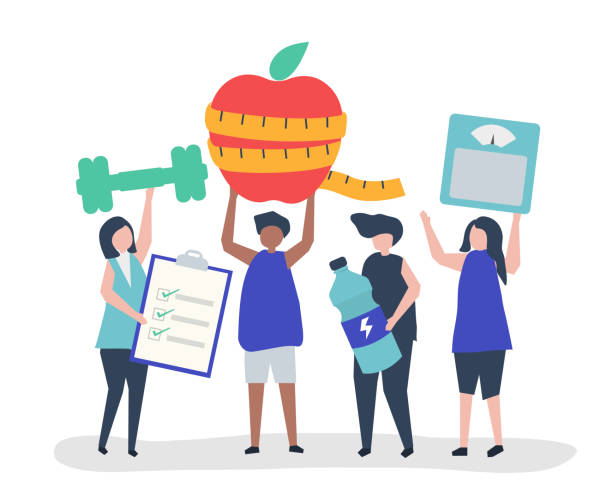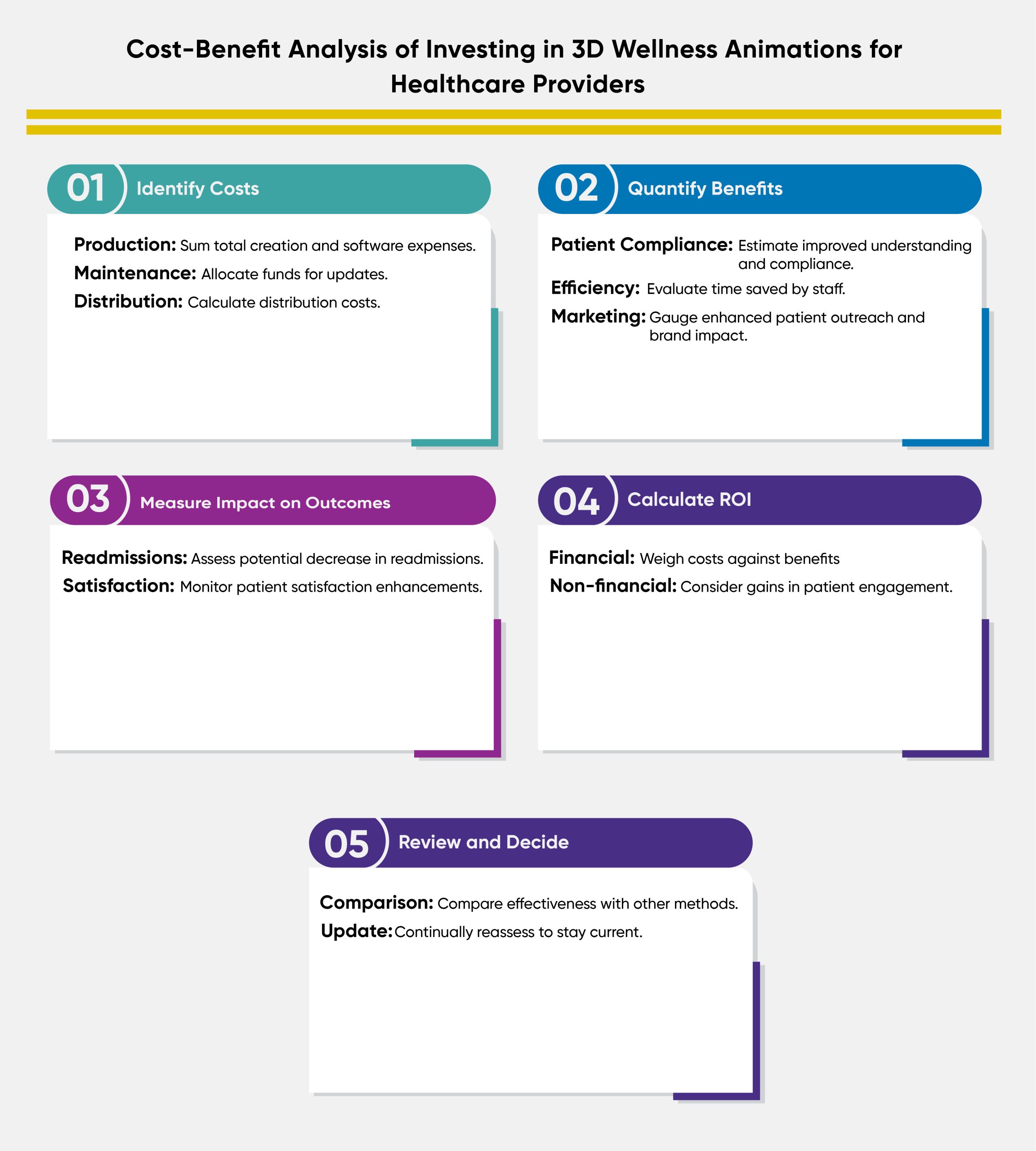Exploring the Benefits of Engaging 3D Wellness Animation in Healthcare

Introducing 3D wellness animation, the latest innovation in wellness communication. It’s clear when exploring the constantly developing field of digital health technologies that engaging 3D wellness animations are revolutionizing our understanding, interaction, and eventually use of health-related information. The field of healthcare animation is expanding and offers great opportunities for anyone interested in technology, healthcare, or digital content creation.
What Makes 3D Wellness Animations So Engaging?
- Visual Appeal: The first thing that strikes you about 3D wellness animations is their captivating visual quality. Unlike static images or text, 3D animations offer a lifelike representation of complex health processes which are easier to understand and more appealing to the viewer.
- Simplified Communication: Complex medical concepts can be hard to grasp. 3D animations break these down into simpler, digestible content, making it easier for everyone to understand critical health information, regardless of their medical background.
- Emotional Connection: Animations have the unique ability to trigger emotions. An engaging 3D wellness animation can make the viewer feel cared for and motivated to take action about their health.
Key Applications of 3D Wellness Animations
- Patient Education: From explaining surgical procedures to demonstrating the use of new medications, animations help patients understand their health better.
- Professional Training: Medical professionals can use animation to visualize and learn complex procedures.
- Marketing: Health services can be marketed more effectively using vivid, accurate 3D representations of their benefits.
The Role of Animation in Remote Healthcare
3D animations for health have established an important role, enhancing the quality and effectiveness of remote healthcare services in the industry of telemedicine. As healthcare delivery increasingly shifts to virtual platforms, the demand for clear and engaging patient communication has never been higher. 3D animations serve as an invaluable tool in bridging the gap between healthcare providers and patients who are not in the same physical location.
Enhancing Patient Comprehension Virtually: One of the primary challenges of remote healthcare is ensuring that patients fully understand their health conditions and the treatments prescribed over digital platforms. 3D wellness animations can vividly demonstrate complex medical procedures or the mechanism of diseases in ways that words alone cannot. This visual clarity helps patients grasp difficult details, making them more comfortable with the treatment plans and more likely to comply with medical advice.
Breaking Down Barriers: Geographic and language barriers often complicate the traditional healthcare delivery models. Animations can be easily translated and adapted to different languages and cultures, making them a universal tool for education across diverse patient populations. Moreover, visual content expounds its utility in global health contexts by virtue of being naturally more accessible and less reliant on literacy levels.
Supporting Self-Management: For chronic conditions, ongoing patient education plays an important role in disease management. 3D animations can illustrate lifestyle adjustments or medication dosages that patients need to follow at home, which is especially useful when face-to-face interactions are limited. By providing clear, engaging instructions, animations empower patients to manage their conditions more effectively, potentially reducing the frequency of hospital visits and readmissions.
Facilitating Synchronous and Asynchronous Communication: During live telehealth sessions, doctors can use animations to explain diagnosis or treatment plans, ensuring that the session is as informative as possible. Moreover, these animations can be shared as part of follow-up emails or patient portals, where patients can review them at their own pace, reinforcing understanding and retention outside of the live interaction.
How Are These Animations Created?
Creating a top medical animations service involves a blend of creativity, technical skill, and deep understanding of medical science. The usual process is shown here:
- Conceptualization: It starts with identifying the key message and understanding the audience’s needs.
- Storyboarding: This is the blueprint of the animation, where every scene is planned for smooth storytelling.
- Asset Creation: Designers create the 3D models that will be animated.
- Animation: The actual process where models are brought to life through motion.
- Rendering: This is where the animated models are finally processed to produce the final video.
- Post-Production: Editing to enhance sound, narration, and visuals of the animation.

Best Practices for Effective Wellness Animations
- Keep It Accurate: Medical accuracy is non-negotiable.
- Focus on Clarity: Avoid clutter. Keep animations clear and easy to understand.
- Engage Emotionally: Aim to connect emotionally with the audience to increase engagement.
- Call to Action: Always conclude with a clear, actionable step that viewers can take.
Case in Point: Impact of Engaging 3D Wellness Animations
| Metrics | Before Animation Use | After Animation Use |
| Patient Understanding Levels | 50% | 90% |
| Engagement Rates | 30% | 75% |
| Recall of Information | 40% | 85% |
This table illustrates the significant impact that well-crafted animations can have on healthcare outcomes.
Comparative Analysis of 3D Animation Impact
The integration of 3D animations into healthcare education has shown a marked improvement in patient engagement and understanding compared to traditional methods. A comparative analysis of the effectiveness of 3D animations versus other educational tools like pamphlets, brochures, and live demonstrations, illustrating why animations are increasingly favored in medical settings is explained below.
Increased Engagement and Retention: Studies consistently show that visual information is retained at much higher rates than textual information. While a brochure or pamphlet may be overlooked or quickly forgotten, a dynamic 3D animation holds the viewer’s attention, leading to better engagement. For instance, retention rates for visual information can be as high as 65% after three days, compared to only 10-20% for information read or heard, according to the Social Science Research Network.
Complexity Simplified: Medical procedures and concepts often involve complex systems that are difficult to describe verbally. Live demonstrations can provide some clarity, but they are not always practical or repeatable for every patient scenario. 3D animations excel in breaking down these complexities into digestible, understandable parts that can be viewed multiple times, ensuring that patients have a clear understanding of their medical conditions and treatments.
Accessibility and Consistency: One significant advantage of 3D animations over live demonstrations is their consistency. A live demonstration’s effectiveness can vary based on the presenter’s skill and the environment, whereas an animation provides a consistent message each time it is viewed. Moreover, animations can be easily accessed from anywhere at any time, providing crucial information to patients who may not be able to visit a healthcare facility.
Cultural and Linguistic Flexibility: While traditional printed materials need to be reproduced in multiple languages and versions to cater to different audiences, animations can be quickly adapted with different voiceovers and subtitles. This flexibility not only saves time and resources but also ensures that the educational content is inclusive and broad-reaching.
Cost-Effectiveness Over Time: Initially, producing a high-quality 3D animation may require a more substantial investment compared to printing brochures. However, over time, animations prove to be more cost-effective. They don’t have to be reprinted, they can be readily updated with fresh data, and they can be sent anywhere in the world for free.
Choosing the Right Healthcare Animation Company in the US
When looking for a healthcare animation company in the US, consider these factors:
- Experience and Portfolio: Look for a diverse portfolio that showcases a wide range of animation styles.
- Client Testimonials: These can provide insights into the company’s reliability and quality of service.
- Technical Expertise: Ensure they use the latest tools and follow best practices in 3D animation.
Conclusion
By connecting the public with complicated medical information, captivating 3D wellness animations are transforming healthcare communication. Through visual storytelling, these animations clarify complex data and promote proactive health care, therefore making them understandable to a large audience. In marketing, professional training, and patient education, they are priceless. Furthermore, they are essential to remote healthcare since they provide both real-time and delayed communication and help to get over language and geographic barriers. Using 3D animations can significantly improve the digital presence of healthcare providers trying to increase patient engagement and content producers wanting to make an impression. 3D wellness animations are still an important tool for patient and healthcare professional guidance and control even as medical technology advances.
FAQs
Q 1: What are 3D wellness animations used for?
They are used for patient education, professional training, and marketing of health services.
Q 2: How long does it take to create a 3D wellness animation?
The time can vary widely depending on the complexity, but typically it ranges from a few weeks to several months.
Q 3: Are these animations only for professionals?
No, they are widely used in patient education to help non-professionals understand complex health issues.
Q 4: What does it cost to produce a 3D wellness animation?
Costs can vary based on the animation's length, complexity, and the detail required. Basic animations may start from a few thousand dollars and go up to tens of thousands for more detailed projects.
Q 5: How effective are 3D wellness animations in improving health outcomes?
Studies show significant improvements in understanding and engagement when 3D animations are used, leading to better health outcomes and compliance with medical advice.
Q 6: Where can I find 3D medical animation services?
You can find high-quality 3D medical animation services from specialized companies that focus on healthcare animations, ensuring accuracy and engaging visuals.










